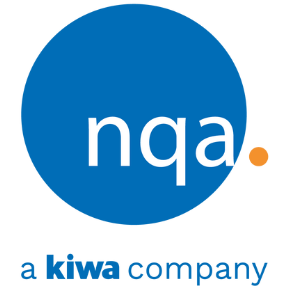Benefits of using SWOT Analysis Tool in ISO 9001
In this article, ICON Quality & Safety Ltd’s Daniel Psaila introduces the ICON ‘SWOT analysis model and approach’ to tackling the ISO 9001:2015 transition task.
The SWOT analysis tool provides a ‘menu’ of options for an organization to consider when seeking to create a customized quality management system designed to support the organization’s strategic business direction and quality objectives.
This reflects the approach we have taken with both ‘transition’ and ‘new registrant’ clients, resulting in the creation of new requirement ‘pro-formas’ to complement existing quality assurance procedures.
The model provides a ‘road map’ for organizations (top management) and facilitators (Internal Quality Managers or External Quality Consultants) to address tackling the new ISO 9001:2015 requirements.
When using the analysis tool, it is important to realize that there can be various interactions between the SWOT sections i.e. while some strengths can help identify opportunities; they can also hide weaknesses which may contain threats (risks) and so on.
THE BENEFITS
"As with any transition it is important that you take the time to understand the core changes” – NQA.
In our view, the SWOT analysis tool is useful for providing an overview of the new ISO 9001:2015 requirements in one place - for both ‘transition’ and ‘new registrant’ organizations to address.
It can help to identify the interaction of the various process activity actions required.
Also it can assist top management and ‘facilitators’ (internal or external to the organization) to focus on the most significant business and quality management system risks, opportunities and strategic objectives.
At ICON, we believe it is an appropriate and versatile quality management tool/technique for quality practitioners to use as a starting point for tackling the new ISO 9001:2015 requirements.
PUTTING THE SWOT ANALYSIS TOOL INTO ACTION
Strengths
Understanding the business environment (4.1) and the needs of interested parties (4.2) should certainly be part of an organization’s strengths. Using their organizational knowledge (7.1.6) to analyse these strengths should hopefully assist the organization to identify business improvement opportunities (10.1).
Weaknesses
We have placed the new Annex SL structure requirements for ISO 9001:2015 in this section to highlight the need for an honest appraisal of where the organization is at ‘viz-a-viz’ the additional ISO 9001:2015 standard requirements (i.e. a ‘gap analysis’).
Addressing these gaps is likely to be where the challenge lies for most ‘transitioning’ and/or ‘new registrant’ organizations.
Opportunities
ISO 9001:2015 provides the opportunity for an organization’s top management to fully engage with the quality management system (5.1) and formulate their business (quality) objectives (6.2) in line with the quality policy and business strategy.
Importantly, the standard also provides the opportunity for an organization to communicate awareness (7.2) of the quality policy and objectives (a) at all levels and (b) to everyone who carries out the organization’s work.
Further, the standard requires an organization to seek out opportunities for proactive improvement (10.1), not just to correct things when they go wrong!
Threats (Risks)
Risk is defined as “the effect of uncertainty” (ISO 9001:2015), which can be positive as well as negative, therefore it is essential that the organization:
- Identifies its significant business risks
- Assesses the potential impacts of those risks
- Engages in risk prevention measures and activities
- Monitors the situation for adverse trends
The standard’s focus on ‘risk-based thinking’ means that the organization needs to identify the risks to their products, services and processes as well as the risks to their quality management system.
OTHER QUALITY MANAGEMENT TOOLS AND TECHNIQUES
Following on from the initial SWOT analysis, other quality management related tools, techniques and approaches can be deployed as appropriate and applicable to the organization.
![]()
TOP THREE ISO 9001:2015 TRANSITION TIPS
😊 COMPLEXITY - Do not underestimate the work involved!“The changes are significant and will require an extensive evaluation of your existing system to
ascertain the degree of conformity with the new risk based approach detailed in ISO 9001:2015” – NQA.
-
The new standard requires that the quality management system needs to link directly to the organization’s strategic direction and objectives.
-
The new requirements are process based and cannot just be ‘bolted-on’ to existing systems.
-
Top management will need to demonstrate leadership so that everyone understands that the quality management system is central to how the business operates.
😊 TIME - Do not underestimate the time involved!
-
The ISO 9001:2015 transition deadline of 15 September 2018 is not that far away!
-
As the new requirements are process based, we have found a timescale of between four to six months to complete the work involved is not unrealistic.
😊 TEAMWORK - Involve the right people in the right ISO 9001:2015 Transition activities at the right time!
-
Our experience to date leads us to believe that ISO 9001:2015 calls for a greater ‘facilitation’ approach compared to ISO 9001:2008, in order to guide top management through the processes involved in completing the work required by this major revision to the standard.
-
Ideally, the facilitator will be someone with sufficient authority, experience and stature to achieve top management ‘buy-in’.
-
The facilitator will also require a detailed knowledge of the various quality management tools and techniques available (including SWOT) and how they can be deployed effectively within the organization.
This article has been authored by Daniel Psaila at ICON Quality & Safety Ltd for use on the NQA Certification Ltd website. ICON Quality & Safety Ltd is listed as a trusted and valued consultancy organization on NQA’s Associate Consultant Register. To find out more please click here.
